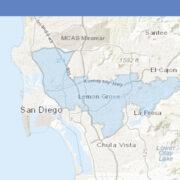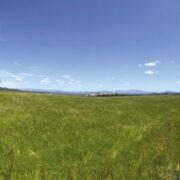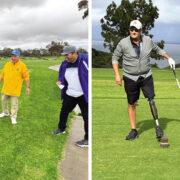Several years ago, I produced a special TV report on the topic, “What would happen if Filipino health care professionals in the U.S. do not report for work?”
The point I wanted to make was the vital role that Filipino doctors and nurses, and other health-care professionals, play in America’s health-care system.
In the face of the coronavirus (COVID-19) epidemic, it would be heartless to even contemplate that possibility. Filipino doctors and nurses are now in the thick of the deadly struggle against the pandemic, like soldiers sent to the front lines. And, like soldiers, some of them may not come back alive.
We should all hope and pray that no harm will befall them and that they will continue the good fight, despite the lack of rest and sleep and, worse, despite the lack of adequate protection against the unseen foe. So many lives depend on them.
I feel personally concerned because some members of my family could be involved in the struggle. My elder sister, Dr. Evangeline Garcia, is a medical practitioner in Maryland. Because she is 84 years old, she has been advised to stay home. I should thank the Lord for that, although, knowing her, she will probably want to go to the front lines.
I recall that during the first Iraq War, as a reserve Lt. Colonel in the US Air Force, she volunteered for active duty. Mercifully, Saddam Hussein’s forces surrendered before she could be dispatched to the battlefront. But she was actively involved in caring for trauma victims following the 9/11 attack in New York.
One of my daughters-in-law, Anne Marie, is a nurse. Born and raised in New York, she is now doing her share, attending to patients in the San Francisco Bay Area. However, her younger sister, Allison, and her mother, Sonia, who are also both nurses, reside and work in New York.
New York City, from the latest reports, has become the epicenter of the pandemic in the U.S. As of the latest count, there were 29,158 confirmed cases of coronavirus in the city and over 52,000 in New York state. But these are only the figures that have been officially reported to health authorities. Who knows how many there are who have not yet been accounted for but are — or could be — infected?
Of the confirmed cases, as of this writing, 517 have died in New York City and 728 in the state. Dreadfully, the numbers could grow exponentially tomorrow and before this column goes to press.
A January 2008 analysis of U.S. Census Bureau data indicates that, of the 215,000 Filipinos residing or working in New York, 3 out of 10 are nurses or health care professionals. Many of the rest are their spouses and children. Like many Filipinos, I have relatives and friends in New York and I’m worried about their safety.
At Seton Hospital in Daly City, one of the largest medical facilities in Northern California, 60% of the employees are Filipino. Many of them are nurses.
According to Philippine government records, the Philippines is the largest exporter of nurses in the world. As of 2019, one-third of foreign-born nurses in the U.S. are Filipino (that figure does not include my daughter-in-law and her sister because both are native-born New Yorkers).
Since the mid-60s, when U.S. immigration law favored the entry of professionals, some 160,000 Filipino nurses have joined the U.S. health-care system. The latest figures indicate that Filipino nurses account for 17.6 percent of registered nurses (RNs) in California. The Golden State is one of the hardest-hit by the pandemic.
According to official records, as of 2016, the Philippines provided the third-largest number of actively licensed foreign doctors in the U.S. at 13,507, next to India and the Caribbean. I also know of several Filipino doctors who had a medical practice in the Philippines but not in the U.S. due to licensing issues. And I understand that some of these doctors have become RNs.
Also, according to records, the University of Santo Tomas College of Medicine accounts for the largest number of Filipino doctors in the U.S. (4,545), followed by the University of the Philippines (2,044) and the University of the East (2,070). I believe my elder sister, a UST alumnus, and a first cousin, Dr. Eriberto Tanpiengco (Far Eastern University College of Medicine), were among the earliest doctors from the Philippines to join the American medical corps.
The fact is that Filipino nurses and doctors are among the largest number of health care professionals in the world. This also means that many of them are on the coronavirus global battlefronts.
Wherever the diaspora has dispatched workers from the Philippines, a significant number likely comprises of health care professionals. The two European countries that have reported the largest number of coronavirus cases, Spain and Italy, also have large Filipino populations, with an estimated 150,000 in Spain and 108,000 in Italy (plus undocumented Pinoys whose estimated numbers vary from 20,000 to 80,0000).
In the United Kingdom, where even Prince Charles and Prime Minister Boris Johnson have been found positive for the coronavirus, Filipino nurses make up the largest number of foreign RNs at 10,719, according to a parliamentary report dated April 8, 2019. A 2004 report of the Philippine Overseas Employment Administration (POEA) indicates that the UK is the third most preferred destination for Filipino nurses, with Saudi Arabia and the U.S. ranking first and second, respectively.
Also, according to the POEA, of the 2.3 million Overseas Filipino Workers (OFWs) officially accounted for in 2018 (excluding the undocumented), 25% are health-care professionals. That’s a whopping 575,000 conceivably out there on the world’s pandemic front lines.
Needless to say, this massive drainage of health-care professionals has resulted in a decline in the availability and quality of health services in the Philippines where the coronavirus has also become a major threat.
We would, understandably, wish that these health-care professionals were in the Philippines, attending to our countrymen.
Years ago, I asked a younger brother of mine, Dr. Vic Makabenta, if he wanted to join my sister and me in the U.S. to continue his medical practice. His response embarrassed me. He said there were more than enough doctors in America and he was needed more urgently in the Philippines. He worked as an assistant provincial health officer in Biliran sub-province until he died in his mid-40s.
But we cannot begrudge those who chose to work overseas. They have their own valid reasons, mainly economic. We should only pray for their safety as they minister to the sick and dying in the midst of the contagion.
Newsweek reported that, as of March 27, more than 50 doctors had died from coronavirus in Italy. A BuzzFeed News report dated March 26 stated: “Health care workers fighting the coronavirus outbreak across the country are getting sick and dying, nurses and doctors say. And despite the fact that they’re essential to fighting the epidemic, no one in the US seems to be keeping track.
“At least 35 California health care workers on the front lines of the coronavirus outbreak have already tested positive for COVID-19, state officials reported on Wednesday.”
Who knows how many of these heroes and heroines are Filipinos…or relatives and dear friends? We can only pray that the numbers are few.
([email protected])




